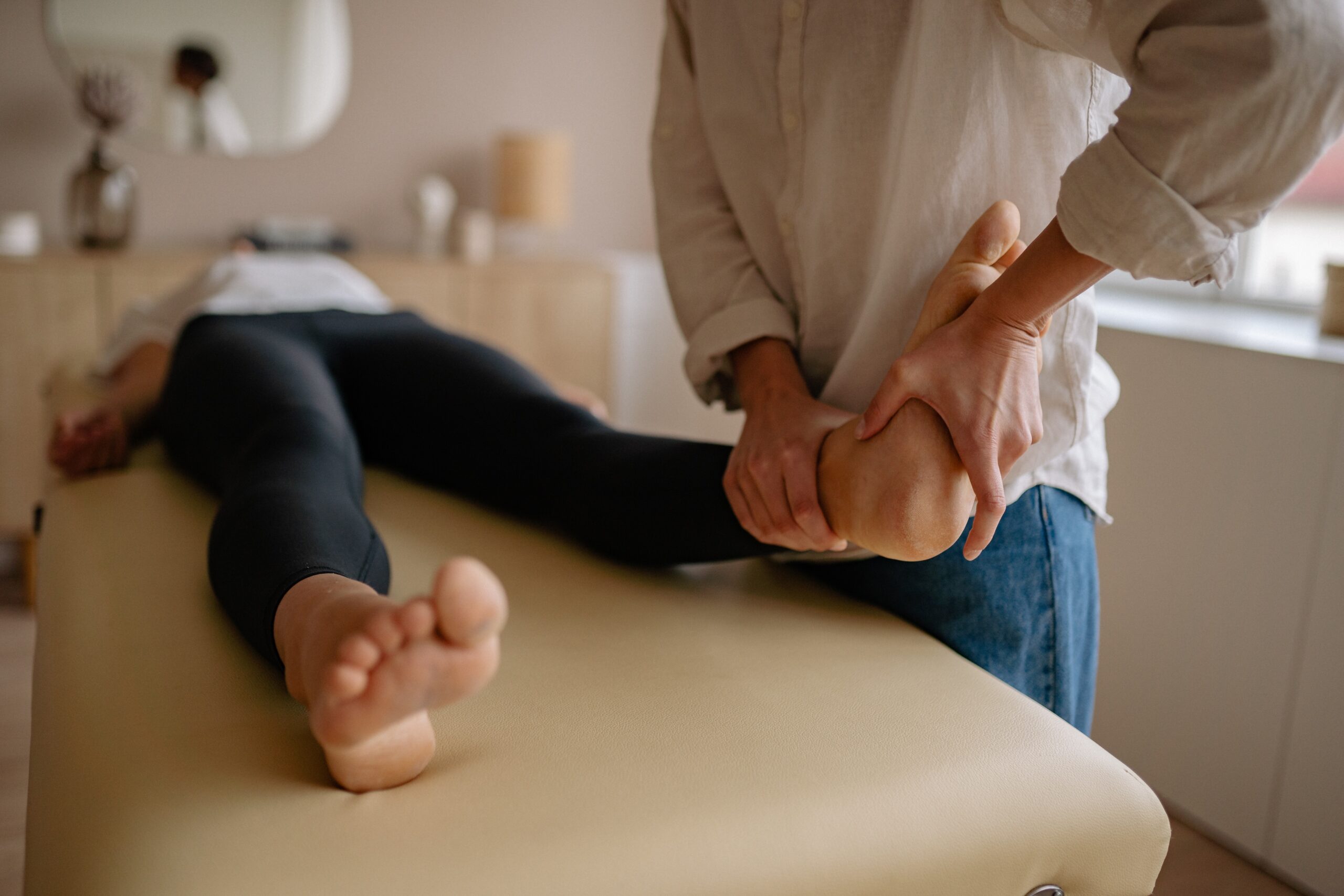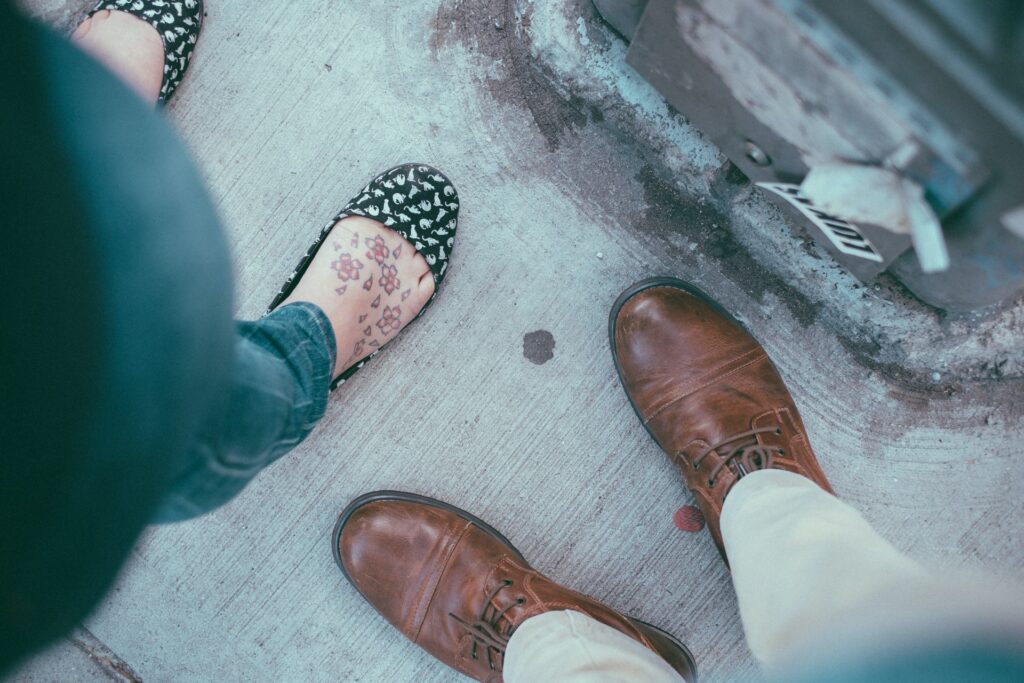Flat Feet: Types, Symptoms, Causes & Treatment

If the inside of your feet’s arches are flattened and your entire foot sole touches the floor when you stand up, you have flatfeet.
When the arches don’t develop during childhood, flatfeet can happen, a common and typically painless condition. In other instances, flatfeet arise as a result of an injury or from age-related wear-and-tear stresses.
Because the condition can change how your legs are aligned, flatfeet can occasionally cause issues with your ankles and knees. Flatfeet typically do not require treatment if you are not in pain.
Table of Contents
What are flat feet?
One or both of your feet may have little to no arch, which is referred to as having flat feet or flatfoot. The foot pads press into the ground when you stand. A foot’s arch is typically hidden, though occasionally it can be seen when you lift the foot.
At birth, every baby has flat feet. By the age of six, arches usually begin to form. About two out of every ten kids still have flat feet as adults. Some adults have collapsing arches. Another name for flatfoot is fallen arches.
Most people don’t have an issue with flat feet. Treatments can help if flat feet are the source of pain or other issues.
What types of flat feet are there?
Whether they develop in adulthood or continue to exist after childhood, flat feet can cause issues. The various forms of flatfoot include:
- The most typical flat feet are flexible. Even when you aren’t standing still, you can see the foot arches. As soon as you put weight on your feet, the arches vanish. Early childhood or adolescence are when flexible flatfoot first appears. Both of the feet are affected, and it gradually gets worse with age. The tendons and ligaments in the foot arches are prone to swelling, stretching, and tearing.
- Rigid: When standing or sitting (with weight on the feet), a person with rigid flat feet has no arches (no weight on the feet). This condition frequently starts during adolescence and gets worse as people age. Your feet might be in discomfort. Flexing the feet upwards or downwards or swiveling them side to side can be challenging. One or both feet may be affected by flatfoot.
- Developed by adults (fallen arch): An adult-developed flat foot (fallen arch) is characterized by an abrupt decline or collapse of the foot’s arch. The foot turns outward due to the fallen arch, which can be painful. One foot only could be impacted by the issue. The leg tendon that supports the arch, the posterior tibial tendon, is the most frequent site of inflammation or a tear.
- Vertical talus: This birth condition (congenital handicap) prevents arches from developing in some newborns. The talus bone in the ankle is positioned incorrectly. The foot’s bottom has a rocking chair-like appearance. The term rocker-bottom foot also applies to vertical talus.
What symptoms of flat feet are there?
Many individuals with flat feet don’t have any pain or other issues. However, some flatfoot variations can cause discomfort. Some signs could be:
- Leg pains.
- Leg or foot muscle pain (aching or fatigue).
- Pain in the outside of the foot, the heel, the ankle, or the arch.
- changes in your gait or discomfort when walking (how you walk).
- Toe splay (front part of the foot and toes point outward).
Causes children and infants with flat feet
Children
Children frequently have flat feet, which are frequently brought on by:
- Heredity
- Ligament elasticity
- Achilles tendon tightness
- inadequate foot exercise
A child’s arches typically start to form in infancy and develop into normal arches in accordance with normal growth patterns.
Adults
Adults may develop flat feet as a result of injury, a tight Achilles tendon, abnormal joint development, ongoing pressure on the foot’s arch, or just aging.
Adults who have flat feet frequently experience:
- Equinus Achilles contracture
- grouping of the rearfoot joints
- strained or hurt tendons
- Marfan’s syndrome and arthritis
- Diabetes
- Obesity
- Overuse, strain, injury, and fractures during pregnancy
- Age
Treatment for flat feet
There isn’t much cause for concern unless there is a significant amount of pain or other foot, ankle, and leg abnormalities that are directly related to your flat feet. There are, however, treatments available for people of all ages if you are experiencing aches and pains.
Children
Checking for flat feet in children is the first step in treatment. Parents and other adults who care for children should keep an eye on them in their early years to ensure proper arch development because children are less aware of such things than adults are. Children should undergo an immediate examination by one of our podiatrists if any anomalies are noticed.
For the majority of flatfoot deformities, our podiatric specialists at Advanced Foot & Ankle will perform both a clinical examination and an X-ray study to identify the type and cause.
The majority of child cases of flat feet are genetic. However, because of their flexibility, their feet can be cared for using:
- Insoles made to order Braces
- Suitable footwear
- Exercise surgery is frequently the most effective treatment for averting future severe developmental complications.
Adults
There are several non-surgical options for treating flat feet and their symptoms, including:
- specific orthotics
- Support and bracing
- Exercises with supportive footwear
- Physical Exercise
- Loss of weight
- alterations to daily activities
- Medication
- Rest
If non-surgical remedies don’t help with your flat feet’s aches, pains, and problems, surgery can be your next choice. Although they are skilled in the many surgical procedures available for treating flat feet, the Advanced Foot & Ankle podiatrists always consider more conservative treatment alternatives first.
Our podiatrists perform a thorough foot examination and pay close attention to the biomechanical operation of the foot when diagnosing flat feet. X-rays are frequently used to assess the alignment of the bones and joints as well. With the help of this review, our podiatrists will be able to provide treatment options for flat feet, the best daily shoes, and running shoes.

Conclusion
At birth, everyone has flat feet. Usually, arches start to form by age 6. Sometimes in adolescence or adulthood, flat feet (or collapsed arches) develop. It’s possible that you’ll feel pain while walking. Consult a medical professional if flat feet cause you issues. Stretching exercises and orthotics are two examples of nonsurgical treatments that can reduce pain and inflammation. Rarely, you might require surgery.
Tags: Flat Feet